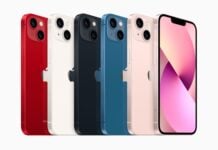The launch of Apple’s Vision Pro has undeniably revolutionized the Extended Reality (XR) market. Offering a blend of high-end specifications and seamless integration with Apple’s ecosystem, it has swiftly positioned itself as a market leader, raising the bar for future competitors.
This article will explore the reasons why the Vision Pro stands apart from other XR headsets and why it will be challenging for competitors to measure up.
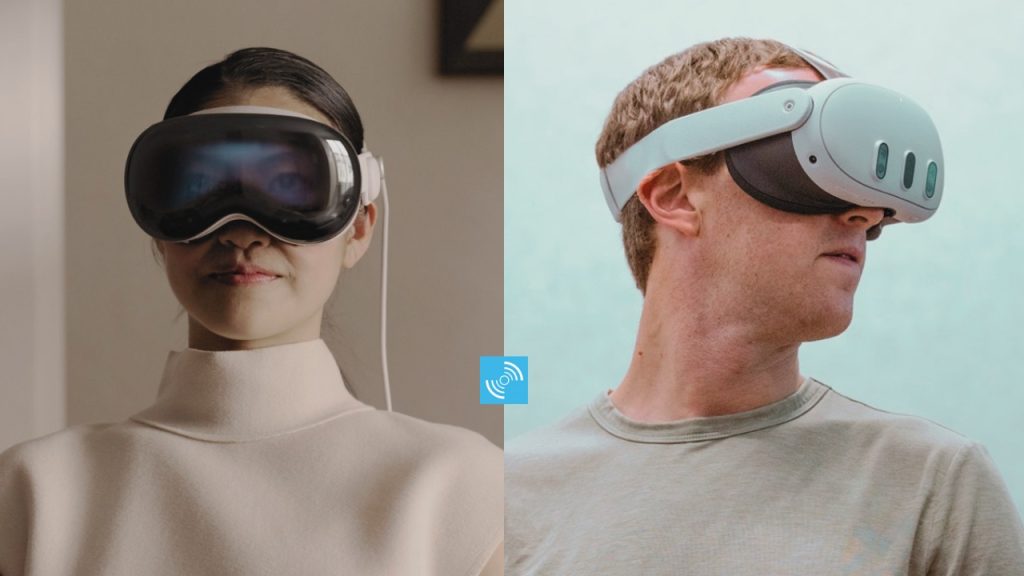
Apple Vision Pro vs Meta Quest Pro vs HTC Vive XR Elite
Unmatched Display Quality: A Visual Tour de Force
Apple’s Vision Pro is redefining display standards in the XR realm, thanks to the game-changing micro-OLED technology. This tech allows the Vision Pro to pack an astounding 23 million pixels across two displays, resulting in incredibly sharp images and vivid colors. Compared to an iPhone pixel, the Vision Pro has 64 times more details, offering a viewing experience like having a 100-foot screen in front of you.
In contrast, Meta’s Quest Pro uses mini-LED technology with advanced lens systems for better visual clarity. It also employs local dimming for more vibrant colors. But even with these enhancements, it doesn’t reach the pixel density of the Vision Pro. HTC’s Vive XR Elite, on the other hand, uses an LCD display providing a balanced, but less spectacular, visual experience.
Comparative Highlights:
Vision Pro: Micro-OLED display
Meta Quest Pro: Mini-LED display
HTC Vive XR Elite: LCD display
Performance
Apple has always been at the forefront of chip innovation, and the Vision Pro is no exception. The dual-core version of Apple’s M2 chip powers the Vision Pro, setting a new benchmark in computational abilities far beyond any mobile-based processors used by competitors. The device also includes an additional R1 chip to process inputs from various cameras and sensors, creating an unprecedentedly responsive and immersive experience.
Comparative Highlights:
- Vision Pro: M2 Processor with dedicated R1 chip for sensor input
- Meta Quest Pro: Qualcomm Snapdragon XR2+
- HTC Vive XR Elite: Qualcomm Snapdragon XR2
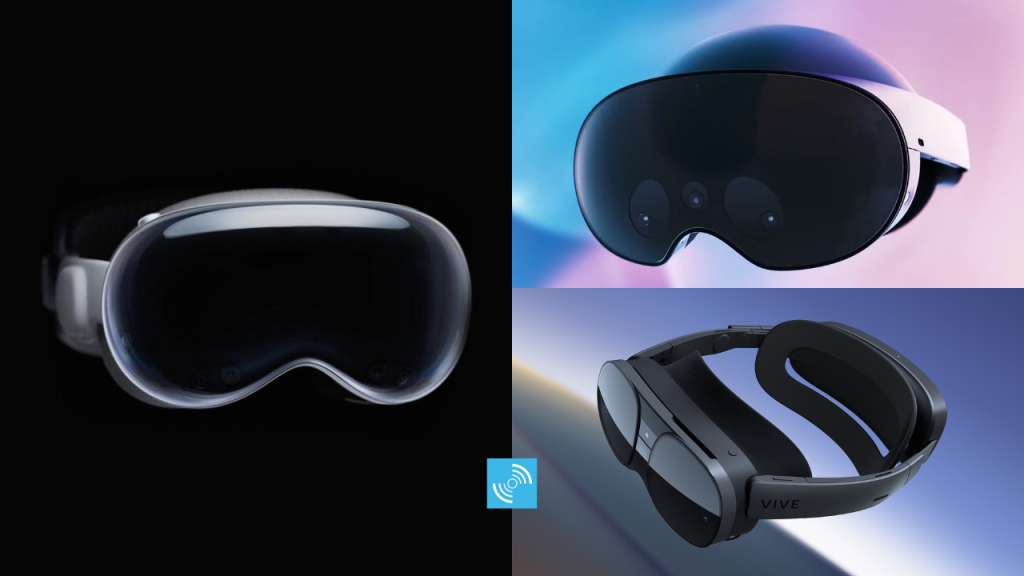
Comfort and Design: The Apple Aesthetic
Comfort and design have also been key areas of focus for the Vision Pro. Apple’s commitment to studying a wide range of head shapes to ensure a comfortable fit for a broad spectrum of users showcases a level of attention to detail that sets the Vision Pro apart. While competitors like the Quest Pro, and Vive XR Elite have also made strides in improving comfort, user experiences often vary.
Comparative Highlights:
- Vision Pro: Custom-fit design based on diverse head shapes
- Meta Quest Pro: Adjustable straps and spacers for eyewear users
- HTC Vive XR Elite: Adjustable IPD and head strap, with optional face cushions
Interaction: Beyond Controllers
In traditional VR setups, the controllers are an essential part of the experience. They allow users to interact with the virtual environment, perform actions, and even experience haptic feedback that further immerses them into the VR world. However, these controllers, although functional, can sometimes prove cumbersome and disconnect users from a seamless experience.
With the Vision Pro, Apple has turned this paradigm on its head. Instead of relying on physical controllers, Apple has leveraged advanced hand tracking and gesture recognition technology to allow users to control their virtual environment. This means users can reach out, touch, grab, and manipulate virtual objects as naturally as they would in the real world.
Comparative Highlights:
- Vision Pro: Advanced hand tracking, eye tracking, and gesture recognition
- Meta Quest Pro: Physical controllers with optional hand tracking, eye tracking
- HTC Vive XR Elite: Physical controllers with no advanced gesture recognition
Price: Reflecting Premium Quality
With a striking price of $3499, Apple’s Vision Pro has certainly established itself in the high-end segment of the XR market. This price is notably higher than the Meta Quest Pro, which costs $999, and the HTC Vive XR Elite, priced around $1,099. This high cost might make potential buyers take a step back and weigh their options.
Apple’s products have always come with a higher price tag. But it’s not just the product you’re buying – it’s the whole Apple experience. The company is known for making top-quality products with the latest technology. This justifies the higher price of the Vision Pro to an extent.
Still, a price of $3499 is a lot of money. Although it shows the premium materials and excellent quality of the Vision Pro, not everyone will be able to justify this expense. However, Apple is known for setting bold prices. The company is confident in its products and knows its loyal customers are willing to pay for the Apple experience.
Comparative Highlights:
- Vision Pro: A high price that matches its top-notch features
- Meta Quest Pro: Mid-range price with a good set of features
- HTC Vive XR Elite: Mid-range price with a good set of features
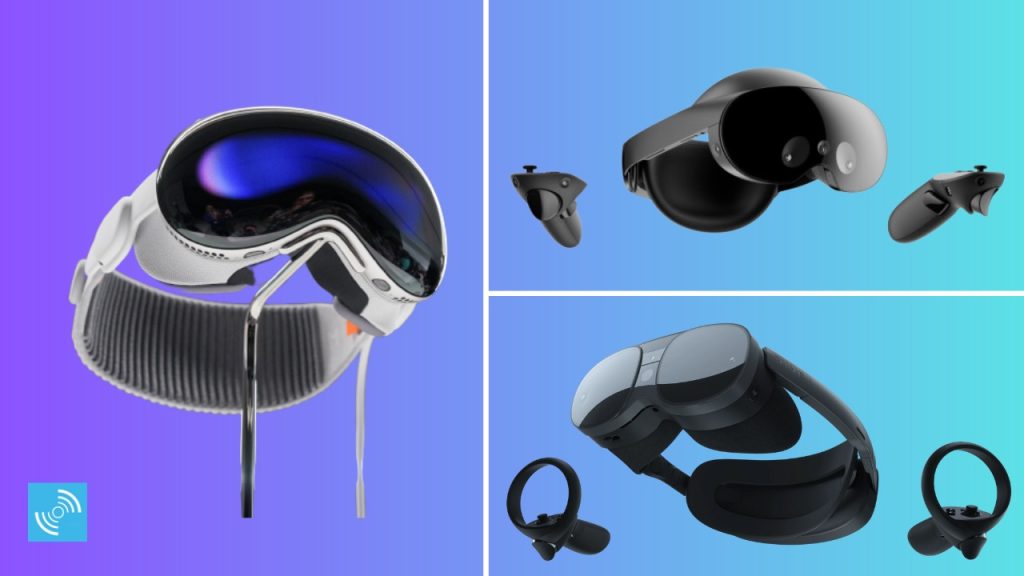
Integration: The Apple Ecosystem Advantage
One of the key selling points of Vision Pro is its seamless integration with Apple’s mature and well-established ecosystem. This integration creates a fluid connection with Apple’s services and devices, allowing users to easily transition their digital life into the XR world. Users can tap into a vast selection of apps and games from the App Store, designed specifically for the XR platform, which significantly enhances the immersive experience offered by Vision Pro. The added advantage of iCloud services also allows for effortless data syncing and storage across devices.
Meta Quest Pro offers an evolving Meta ecosystem, but it doesn’t yet provide the level of integration or the variety of app and game selections seen in Apple’s ecosystem. On the other hand, the Vive ecosystem is mostly targeted at enterprise applications and may not offer the same range of consumer-focused apps, games, or seamless integration across devices like the Vision Pro.
Comparative Highlights:
- Vision Pro: Comprehensive, mature Apple ecosystem
- Meta Quest Pro: Developing Meta ecosystem
- HTC Vive XR Elite: Vive ecosystem with a focus on enterprise applications

Security: Next Level Retina Recognition
Apple Vision Pro boasts a unique security feature: Optic ID. This system uses retina recognition to unlock the device, adding an extra layer of security and privacy for the users. This is a feature not seen in most of the competition, making the Vision Pro stand out even more.
Comparative Highlights:
- Vision Pro: Optic ID (Retina recognition)
- Meta Quest Pro: Standard passcode and device lock
- HTC Vive XR Elite: Standard passcode and device lock
Personalization and Digital Representation:
When it comes to personalization, Apple Vision Pro has introduced the “Persona” feature. This digital representation uses advanced machine-learning techniques to mimic users’ facial expressions and hand movements in real time. This offers a new level of personalization and immersion not seen in other XR headsets on the market.
Comparative Highlights:
- Vision Pro: Persona for real-time digital representation
- Meta Quest Pro: Standard Avatar
- HTC Vive XR Elite: Standard Avatar
Hardware Design:
The Vision Pro’s design shows off Apple’s attention to detail. Its custom aluminum alloy frame, the light seal made from soft textiles, and the 3D knitted headband add comfort while providing a sleek look. This level of aesthetic and functional design is a significant improvement over the standard designs of other headsets.
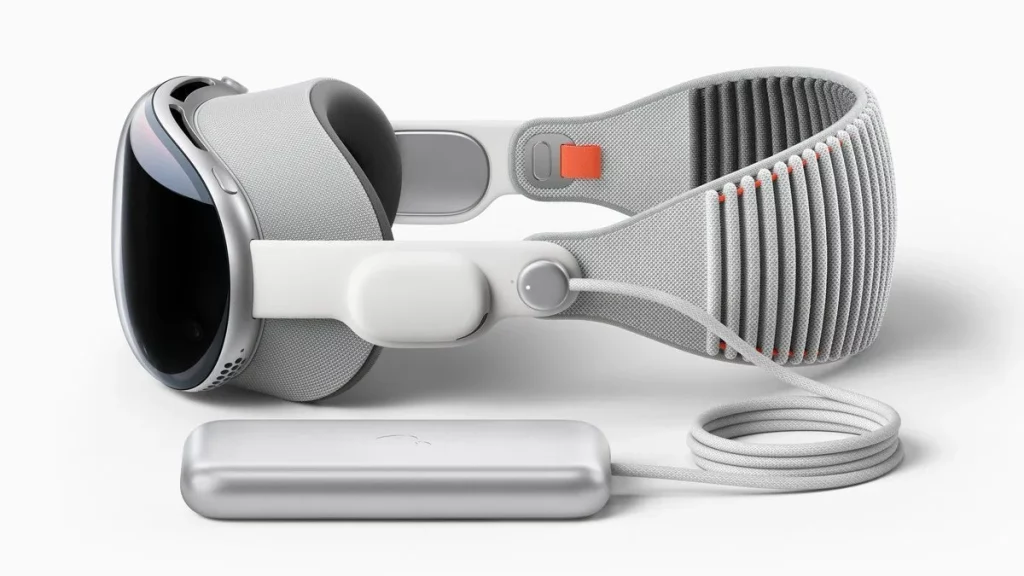
Comparative Highlights:
- Vision Pro: Custom aluminum alloy frame, Light Seal, and 3D knitted headband
- Meta Quest Pro: Plastic frame, foam padding
- HTC Vive XR Elite: Plastic frame, foam padding
Apple’s Vision Pro: Raising the XR Bar
Apple’s Vision Pro has carved a unique niche for itself in the XR market. Its superior display, performance, and integration with the Apple ecosystem, along with the brand’s renowned commitment to design and comfort, have set it apart from the competition. While other XR devices offer considerable features at more affordable price points, the Vision Pro’s premium quality and unmatched user experience truly establish it as the new benchmark in the XR landscape.
The XR market is indeed dynamic and rapidly evolving, with the potential for competitors to rise to the challenge posed by Vision Pro. However, given Apple’s considerable resources and the remarkable technology it has displayed in the Vision Pro, this is likely to be an uphill battle. To truly compete, other companies will need to not only improve the technical specifications of their devices but also match Apple’s attention to user experience and ecosystem integration.
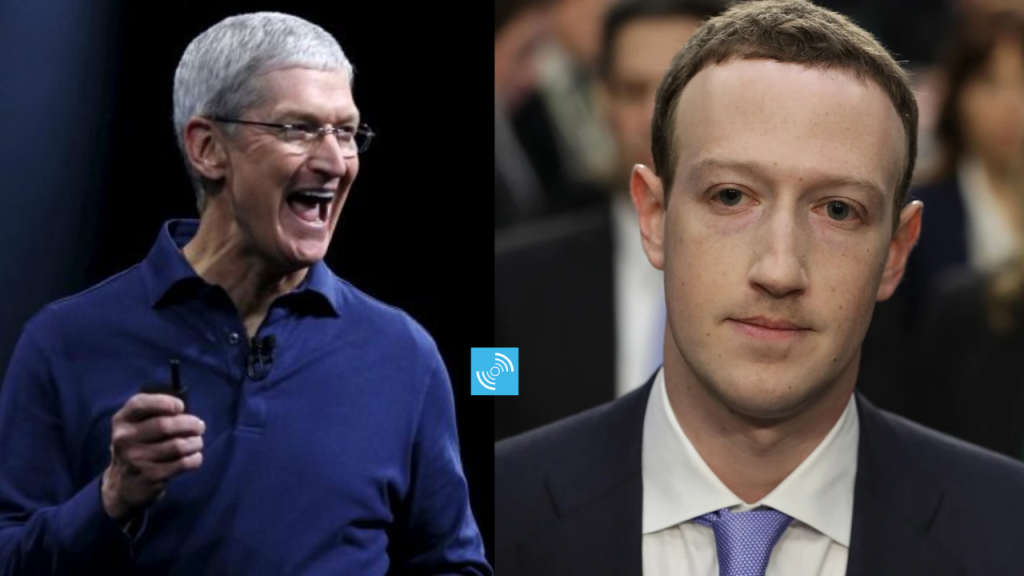
Innovation is a driving force in the tech industry, and competition often serves to benefit consumers. While we can’t predict the future, at this point, it’s safe to say that Apple has created a new standard in the XR market with the Vision Pro. It will be interesting to see how other tech giants respond in the months and years to come. But for now, the Vision Pro reigns supreme.
The introduction of the Apple Vision Pro XR headset has not just raised the bar—it’s created an entirely new one. In the competitive world of tech, this is no small feat. It’s clear that for any other company to catch up, it won’t be a simple task. The Vision Pro is more than just another product—it’s a challenge to the entire XR market to level up.
RELATED:
- Apple Working On A Affordable Vision Pro Headset, Could Launch In 2025
- Sony’s Micro-OLED Panels Drive Up Cost of Apple Vision Pro
- Apple expected to increase prices for iPhone 15, analyst forecasts strong sales
- Download iPadOS 17 Wallpapers in Full Resolution



